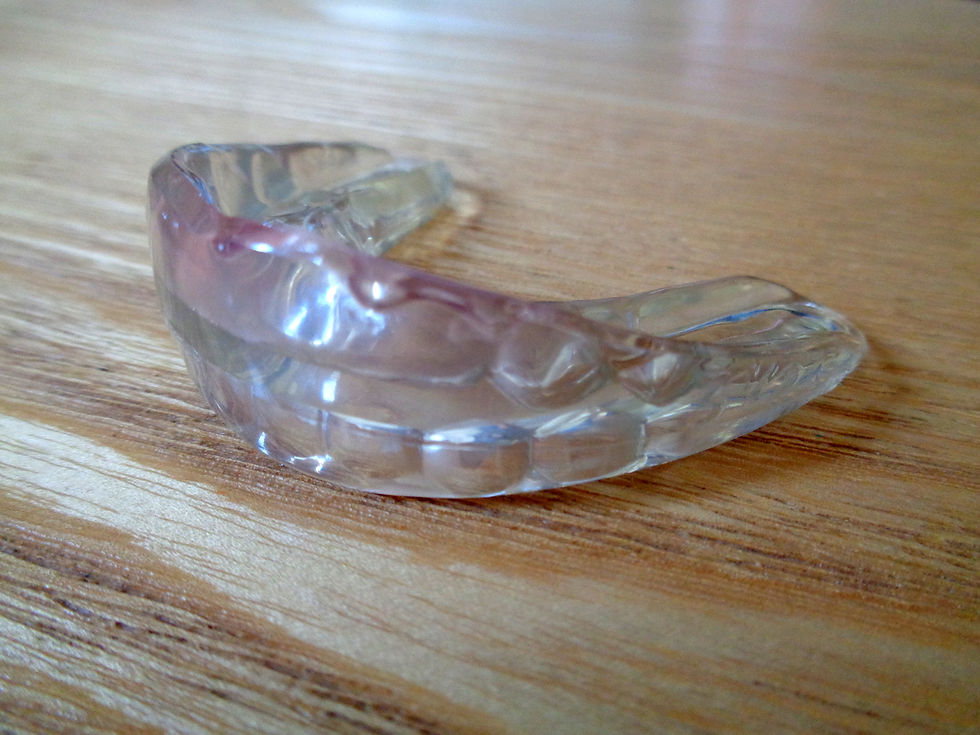Alternatives to Conventional Braces
- Sarah

- Jul 6, 2014
- 2 min read
Okay, so my 7-year-old daughter needs orthodontics for her crowded teeth, and we're not using conventional braces because I want her to have more than just straight teeth. I want to actually encourage her dental arches to grow so that her teeth have plenty of space.

Orthodontic Appliances That Encourage Jaw Growth
I have learned of several different orthodontic options that can encourage the dental arches to grow, rather than just straightening the teeth. Because these options cause the bones to grow to accommodate the teeth, there is not a risk of orthodontic relapse like there is with braces. All of these appliances have the additional advantage that they can be used by children as young as 5 years old.
Lightwire Appliances

Image courtesy of AAGO
These include the original lightwire appliance, called Crozat, which was developed in the 1920's, as well as more recently-developed appliances such as Advanced Lightwire Functionals (ALF) and Kernott Universal. All of these lightwire appliances are made with a flexible, thin-diameter wire that is formed into a removable appliance. These appliances combine function (chewing, swallowing, etc) along with light forces on the teeth, both of which encourage the dental arches to grow.
The lightwire appliances have the advantage that they are not very obvious when being worn, and may even go completely unnoticed by others. One disadvantage of the lightwire appliances is that the wire can sometimes become damaged during insertion or removal.
A good website for finding practitioners that use lightwire appliances is the American Academy of Gnathologic Orthopedics. ALF practitioners can be found on the ALF Orthodontics Website.

Image courtesy of AAGO

Plastic Myofunctional Appliances
Plastic appliances that encourage dental arch growth include the original OrthoTain (developed in the 1960's) as well as the MyoBrace. Just as with the lightwire appliances, the plastic myofunctional appliances work through correcting the function (chewing, swallowing, etc) along with light forces on the teeth that encourage dental arch growth. Plastic myofunctional appliances are typically worn at night as well as for several hours during the day.
Plastic myofunctional appliances have the advantage that they are not custom-made for each patient; rather they are preformed in specific sizes. They do not have the potential for damage like the lightwire appliances do. One disadvantage of plastic myofunctional appliances is that they are bulkier than lightwire appliances, so they are more obvious when being worn.

I have not been able to find a good website that provides a directory of dentists/orthodontists that use plastic myofunctional appliances. However, my daughter's dentist, who I found through the American Academy of Gnathologic Orthopedics site, does use plastic myofunctional appliances as well as lightwire, so that site might be a good place to start.
What's Next?
In my next post of this series, I will detail our experiences in finding a suitable dentist, our experiences thus far with using an orthodontic appliance, and some pictures of the results we have experienced.







Great information! I’ve been providing expansion to patients for almost 30 years. Every patient has unique needs and there is not a one size fits all approach or solution. I perform a thorough evaluation and make recommendation. It‘s always a team approach between me and the patient :)